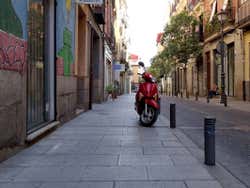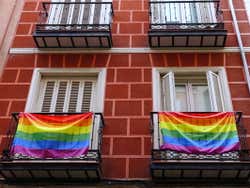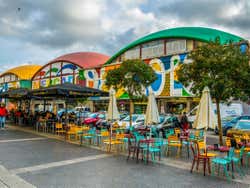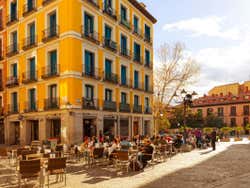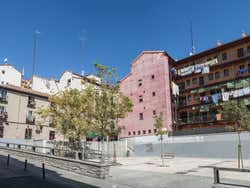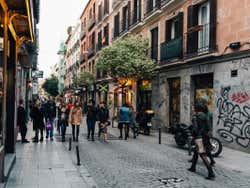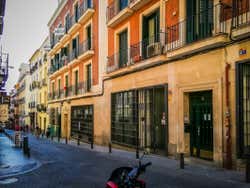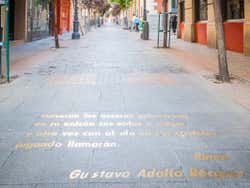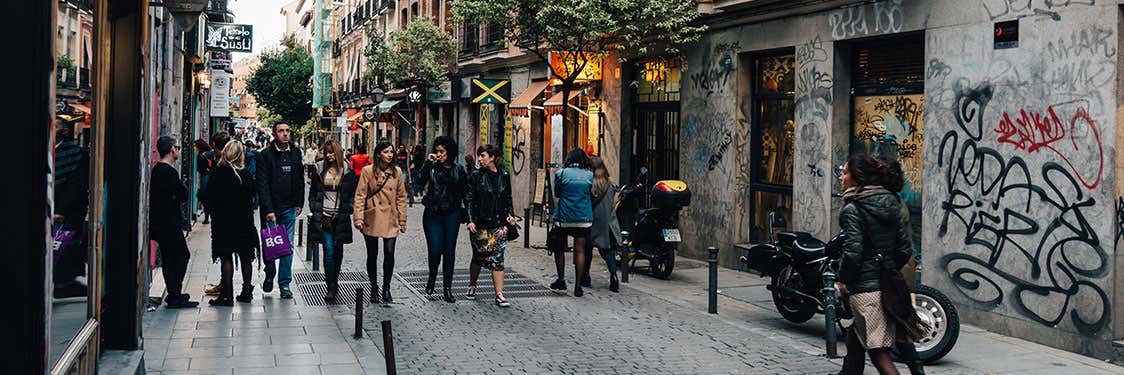
Neighbourhoods in Madrid
Malasaña, Chueca, La Latina, Lavapiés... Madrid has a thousand faces, and its neighbourhoods are the proof of the diversity that reigns in the capital. Strolling through Madrid's neighbourhoods you can discover its most traditional essence, go shopping on the "Golden Mile" or enjoy its most alternative atmosphere. Discover the main neighbourhoods to see in Madrid and the best areas to visit.
The Madrid neighbourhoods are filled with history and unusual characteristics, which make them unique. Each area of Madrid has its own personality - below is a selection.
La Latina
La Latina is the most traditional area of Madrid. In its streets and squares, you can feel the pure essence of the city making this an unmissable spot on any visit to Madrid! La Plaza de la Cebada, la Cava Baja or el Rastro are just some of its many attractions.
Furthermore, La Latina is one of the oldest neighbourhoods in Madrid and was, for several centuries, the epicentre of social life in the city. Strolling through its winding streets, you can find gardens, hidden squares, chapels and, above all, bars. In the evening, this district of Madrid becomes one of the best options for partying in Madrid.
Malasaña
The modern and bohemian face of Madrid is Malasaña. The most unusual bars and restaurants in the city can be found here, in an area that has changed greatly throughout the history of the city. In Malasaña the Dos de Mayo uprising began in 1808 and, centuries after it was the centre of the 'Movida' a musical revolution which took Madrid by storm in the '80s.
If you're looking for something a little different in Madrid, Malasaña is the place for original bars, several restaurants and a great atmosphere, especially at night. Malasaña is a great option for going out partying in Madrid.
At this link you can see all the information about our free tour in Malasaña:
Chueca
Party, a great atmosphere year-round, and diversity are what identify Chueca! This neighbourhood next to Gran Via is home to interesting museums such as the Museum of Romanticism and the Madrid History Museum.
And Chueca is one of the homes of the LGBT community in Madrid, something you can see in the rainbow flags which decorate many of its balconies.
Barrio de las Letras
The traditional Barrio de las Letras was the scene of the Spanish 'Golden Age' - where the best authors of the 16th and 17th centuries wrote and lived. There are verses embossed into the floor itself, and many of the names of the streets pay homage to these writers, such as Lope de Vega, Quevedo or Cervantes.
The Barrio de las Letras is by Puerta del Sol, and is home to special places such as the Plaza de Santa Ana, which has statues of Calderón de la Barca and García Lorca.
Lavapiés
The most multicultural neighbourhood in Madrid is without doubt Lavapiés. This humble neighbourhood in the centre of Madrid is full of old buildings, international restaurants, and all manner of people. The irregular streets of the neighbourhood take you back to the area's origin, an informal suburb which has grown with the city.
The area has its lovers and haters, but it's a great place to eat, have a drink, or try one of the many cultural events.
Salamanca
The posh Salamanca area is in the West of Madrid, from Calle Alcalá to María de Molina. It's one of the most luxurious parts of Madrid, with classic buildings, luxury shops and a wealth of offices and embassies.
Calle Serrano is the centre of the neighbourhood and one of the best places to go shopping in Madrid. Known as the 'Golden Mile' it's home to some of the world's most prestigious fashion brands: an authentic paradise for shopaholics.
